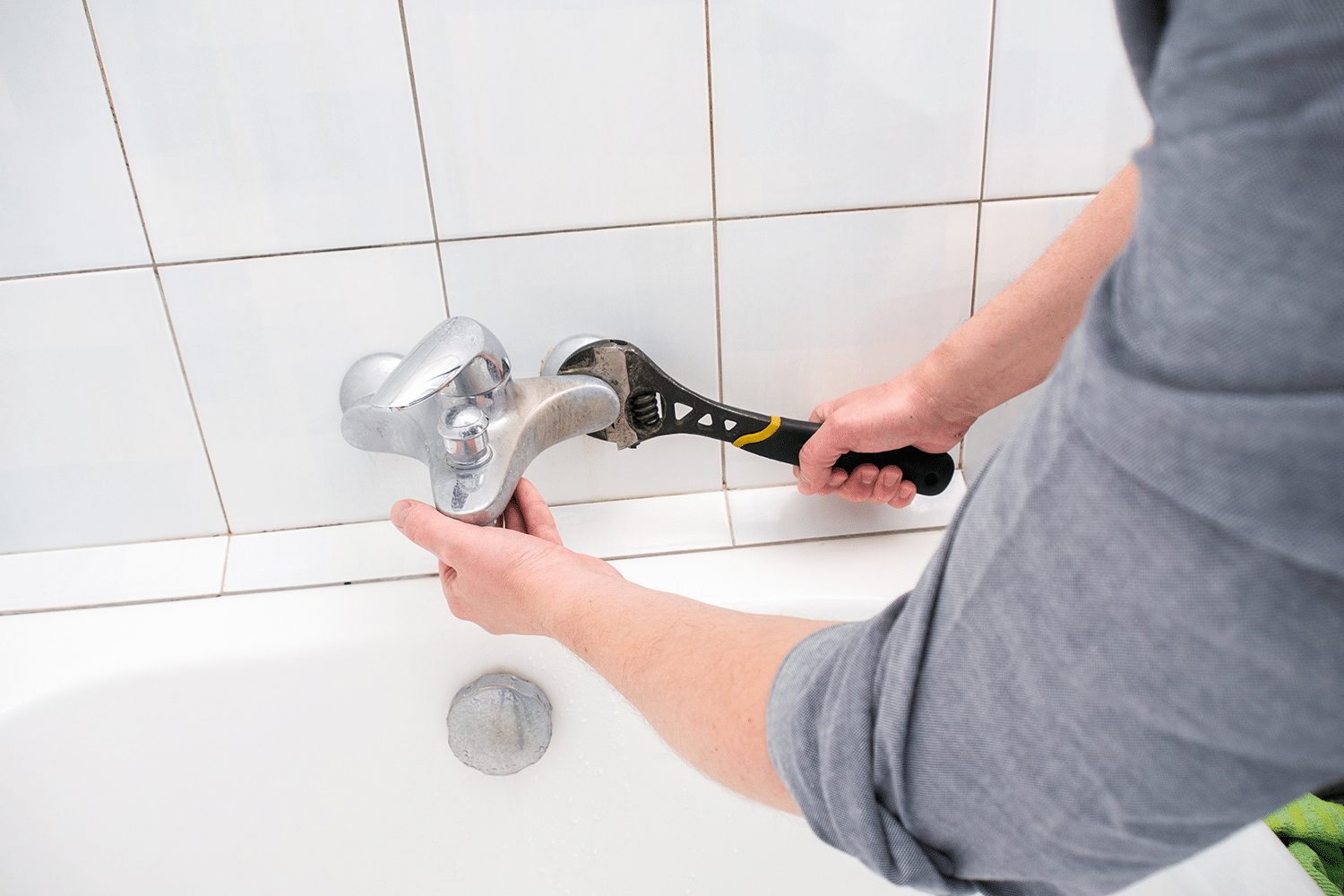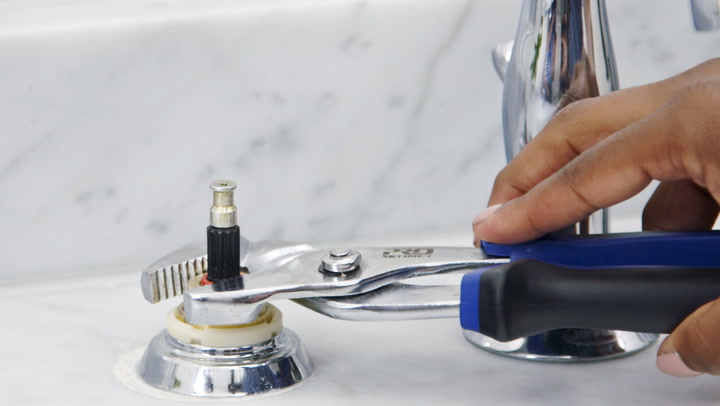We've stumbled on the article involving Why It's Important to Fix Leaky Faucets listed below on the web and believe it made perfect sense to discuss it with you on this site.

Dripping faucets might feel like a small trouble, yet their impact goes beyond simply the nuisance of the sound. From drainage to incurring unnecessary monetary expenses and health threats, disregarding a dripping faucet can lead to different consequences. In this article, we'll explore why it's crucial to address this typical family concern promptly and properly.
Wastage of Water
Ecological Influence
Trickling taps add considerably to water wastage. According to the Epa (EPA), a single tap leaking at one drip per second can waste more than 3,000 gallons of water annually. This not just strains water resources however also influences environments and wildlife dependent on them.
Step-by-Step Guide to Repairing a Dripping Tap
Devices Required
Prior to trying to fix a leaking tap, gather the required devices, consisting of a flexible wrench, screwdrivers, substitute parts (such as washers or cartridges), and plumber's tape.
Typical Faucet Issues and Their Solutions
Identify the kind of faucet and the certain problem causing the drip. Common problems include damaged washers, rusty valve seats, or damaged O-rings. Describe producer directions or on the internet tutorials for detailed assistance on repair services.
Financial Expenses
Boosted Water Costs
Beyond the ecological impact, leaking faucets can inflate water costs substantially. The built up wastefulness in time converts right into higher utility expenditures, which could have been avoided with prompt repairs.
Possible Residential Property Damages
Moreover, prolonged leaking can cause damage to components and surface areas surrounding the faucet. Water buildup can cause discoloration, corrosion, and also structural issues if left neglected, resulting in added repair service costs.
Health and wellness Concerns
Mold and Mold Growth
The constant presence of wetness from a leaking tap produces a perfect atmosphere for mold and mildew and mold growth. These fungis not just jeopardize indoor air high quality however likewise posture health and wellness threats, especially for people with respiratory problems or allergies.
Waterborne Diseases
Stagnant water in leaking taps can end up being a breeding place for bacteria and other microorganisms, raising the risk of waterborne diseases. Impurities such as Legionella microorganisms thrive in stationary water, potentially bring about severe diseases when ingested or breathed in.
DIY vs. Specialist Repair work
Advantages and disadvantages of Do It Yourself Fixing
While some may attempt to repair a trickling tap themselves, DIY repairs feature their own collection of obstacles. Without correct knowledge and tools, DIY efforts can intensify the problem or lead to incomplete repair services, extending the trouble.
Benefits of Employing a Professional Plumber
Hiring a specialist plumber makes certain that the underlying reason for the leaking faucet is resolved properly. Plumbings have the know-how and devices to diagnose and repair faucet concerns efficiently, conserving time and decreasing the risk of more damage.
Ecological Responsibility
Specific Payment to Conservation
Taking obligation for dealing with dripping taps straightens with broader efforts toward water preservation and ecological sustainability. Every person's activities collectively make a substantial impact on maintaining precious sources.
Lasting Living Practices
By prioritizing timely repairs and taking on water-saving habits, people add to sustainable living practices that benefit both existing and future generations.
Safety nets
Regular Upkeep Tips
To avoid trickling faucets, do routine upkeep such as cleaning aerators, checking for leaks, and replacing damaged parts immediately. Additionally, take into consideration setting up water-saving gadgets or upgrading to extra efficient components.
Value of Prompt Repairs
Addressing leaking taps as soon as they're noticed avoids additional water waste and prospective damages, ultimately conserving both water and money in the long run.
Impact on Home Value
Assumption of Well-Maintained Residential Property
Keeping a building in good condition, including attending to maintenance concerns like trickling taps, enhances its regarded value and worth amongst prospective purchasers or renters.
Impact on Resale Worth
Characteristics with well-maintained plumbing fixtures, including taps, command greater resale worths in the real estate market. Resolving dripping faucets can contribute to a favorable impact during building inspections and settlements.
Verdict
Resolving a trickling faucet surpasses plain convenience; it's a necessary action toward saving water, decreasing financial expenses, and safeguarding health and wellness and residential property. Whether via DIY fixings or professional support, taking action to fix dripping taps is a small yet impactful means to advertise liable stewardship of sources and add to a much healthier, more lasting future.
How to Fix a Dripping or Leaky Faucet
A leaking faucet is one of the most common problems that homeowners encounter, but it being commonplace doesn’t make it any less annoying. The constant drip drip drip of a leaking bathtub faucet, showerhead, or sink tap can disturb your home’s serenity. Left neglected, a dripping faucet can also result in higher water bills and discoloration or mold growth in your sink or plumbing fixtures.
Fortunately, you don’t have to be a trained plumber to know how to stop a dripping faucet. With some basic tools, replacement parts, and a little patience, leaky faucet repair is a breeze. In this article, we’ll explain what causes dripping faucets and how you can fix them.
What Causes a Leaking Faucet?
Kitchen and bathroom faucets come in all manner of designs, but most involve some combination of valves, O-rings, seals, and washers. The O-ring is usually the weakest link, but any one of these pieces can wear down over time. Heat, moisture, temperature fluctuations, minerals, mold, and movement can contribute to warping and corrosion, breaking the watertight seal. This just comes with the territory of being a homeowner. Everything is always subject to wear and tear, and some component parts of your appliances and fixtures need to be replaced on occasion. At least replacement O-rings are cheap!
More rarely, dripping faucets can be a symptom of excessively high water pressure. Were this the case in your home, you would probably notice that the leak is not isolated to one faucet. Water pressure issues are harder to resolve on your own. We recommend contacting a professional plumber if you suspect your water pressure is too high.
How to Fix a Dripping Faucet
Pipe wrench or monkey wrench Allen wrench set Screwdrivers Old towel or rag Shut off the water.
Before you do anything, you need to turn off the water to keep from drenching your kitchen or bathroom. You should find a valve under the sink and against the wall. Once you’ve turned this valve, try turning the faucet on to confirm that the water source has been cut off.
If you can’t locate your local valve for the faucet you’re working on, you can always shut off the water to the house at the main valve. Of course, this will prohibit anyone from using the sinks, showers, or toilets while you’re working on the faucet that’s giving you trouble.
Plug or block the drain.
You’ll be disassembling the faucet and removing some small bits of hardware. Plug the drain with a stopper or rag to avoid the possibility of a small screw falling into your P-trap.
Take apart the faucet assembly.
There are several varieties of kitchen and bathroom faucets, each with its own manner of assembly. For detailed instructions on how to disassemble your faucet, you can refer to the fixture’s manual or contact the manufacturer. If you know whether you have a ball, disc, cartridge, or compression faucet, you can find detailed schematics online.
In general, you need to begin by removing the faucet handles. You might notice a small screw that you’ll need to remove with a screwdriver or Allen wrench. If you don’t see any visible securing hardware, it’s likely hidden under a decorative cap that can be unscrewed or popped off with flathead screwdriver.
Remove each piece methodically, consulting a schematic when necessary. Take notes or arrange the pieces in such a way to make it easier to correctly reassemble the faucet later.
Remove the cartridge.
Once you’ve removed the handles and securing hardware, you should be able to remove the valve cartridge or stem. Some cartridges will slide right out. Other faucet models will require you to loosen a nut with a pipe wrench before you can remove the valve stem.
Examine the exposed hardware.
With the cartridge or stem removed, inspect the component parts. Check the rubber O-rings for wear and tear. Also examine the seat washer for corrosion or other damage. These pieces are usually the responsible parties for a dripping faucet, but it’s worth inspecting the other component parts while you have the faucet disassembled.
Find replacement parts.
Once you’ve identified which faucet component has failed, find an identical replacement. Your local hardware store should have O-rings, seat washers, and other standard components in stock. If you have a luxury or uncommon faucet, you may have to contact the manufacturer for a replacement part.
It’s a good idea to take your old parts with you to the hardware store so you can compare them with the store’s inventory and be sure you’re purchasing the correct replacement.
Reassemble the faucet.
With your new parts in hand, reconstruct the faucet and handles. Don’t be tempted to overtighten screws or nuts. You might think this could create a better seal, but it can instead damage or bend a delicate part of the assembly and create a new problem for you.
Turn on the water and test the faucet.
The only thing left to do is test your work. Unplug the sink, turn the water back on, and try the faucet. Congratulate yourself on a job well done!
https://www.libertyhomeguard.com/how-to-fix-a-dripping-or-leaky-faucet/

I have been very interested by Leaky Faucets: Why They Happen & What to Do About Them and I am hoping you liked our article. So long as you enjoyed our blog entry please remember to share it. Thanks so much for going through it.